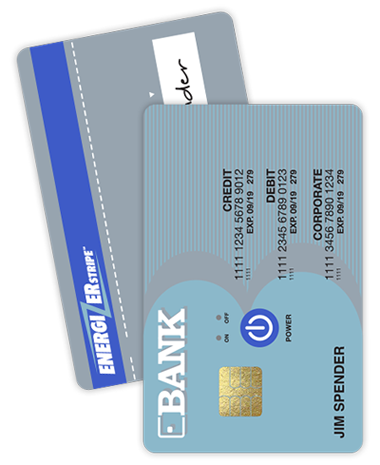How FiTeq Solves Payments’ Real Pain Points

“Cards work the first time, every time, every place in the world. It works. It’s really hard to fix something that isn’t broken.”
So began Karen Webster’s recent conversation with Joan Ziegler, the CEO of FiTeq, on the essential difficulty mobile payments are having with in-store adoption and usage. Despite the fact that some of the biggest and best brands in the world have gotten behind the technology and embraced the true potential, merchant and consumer adoption is crawling along at a much, much slower pace than anyone had ever predicted.
And the reason, Ziegler notes, is that mobile providers haven’t solved for that first big issue for consumers: usability at all merchants. Cards have it universally — phone-based mobile in-store payments, not so much.
“There are plenty of real pain points to solve — for consumers, issuers and merchants,” Ziegler explained. “But no alternative that is on the table has the basic universal acceptance element that consumers value. Without it, consumers simply won’t change a habit as ingrained as using a card,” she continued.
So FiTeq isn’t fighting the card – FiTeq embraces the card. Not just any card, but a secure digital wallet one-card. Emerging from a lengthy stealth period, the San Francisco-based firm is introducing its “smarter” powered card to the market. The FiTeq card aggregates as many as three different card accounts on a single card, and can work at terminals that enable EMV, mag stripe and soon, contactless payments.
At this point, any regular reader with a reasonably good memory may be thinking back to Stratos, Coin, Swyp or Plastc — the wave of powered cards that flourished on crowdsourcing sites in 2014-2015. While they captured headlines about being the “future of card based payments,” that future never quite arrived. Those firms were “all in” on marketing — but had difficulty delivering reliable, robust working products into the hands of consumers. And as of 2016, most have faded from sites.
While that might seem a daunting backstory to some, Ziegler noted that FiTeq had a lot of time to think through its approach. Central to FiTeq’s solution is having benefits to all of the players in the ecosystem. It also had a front row seat for what worked, what didn’t — and how FiTeq could to be different.
Picking the right market — then over-delivering.
Distinctly different from others in the world of the powered smartcard, FiTeq’s card is not going to market under its own brand; instead, it is a network certified, issuer-driven product — given to consumers by their trusted bank.
“We don’t sell directly to the consumer — the bank is our customer,” Ziegler noted. “It’s their brand on our technology. FiTeq offers something uniquely different than other digital wallets, where the bank’s account is sitting right next to their competitor.”
And that one decision — of getting issuers to actually want to attach their brand to FiTeq’s tech — has become a key differentiator for the product. It has forced FiTeq to go above and beyond in their design at all points.
“We felt the real key here was to under-promise and deliver more than the bank and the cardholder expected,” Ziegler explained. “Our engineers know the ISO standards better than anyone else in the business.”
And the proof of the pudding is via a certification by Mastercard — which, according to Ziegler, had an auditor on site at all phases of the product manufacturing to ensure ISO compliance. That means that banks can now confidently sign on, assured that the products they issue to their consumers are something that they and the card association stand behind.
“It is one thing if I say it is great, it is much more important to have a major network and other players in the industry audit and then endorse what we are doing,” Ziegler told Webster. “We have done that on every front – card endurance, security and throughput. We don’t just pass those standards because we have to. We do it because it also demonstrates our commitment to playing for the long term in the market.”
Also key to playing long term in the market?
The durability & reliability issue
The FiTeq “smarter card” — when branded by a bank — essentially allows the bank to load multiple accounts issued by that bank onto a single card, such as the combination of credit and debit. This consolidation increasingly speaks to what consumers want. The TSYS U.S. Consumer Payments Study recently reported that 47 percent of all consumers would prefer to have all of their relationships with a single bank. FiTeq’s smarter card makes it convenient for that consumer to then access those accounts on a single piece of plastic.
 Plastic that can “take a licking and keep on dipping (or swiping),” Ziegler noted. In order to achieve card network certification, their cards were literally alternately frozen, roasted, drowned and generally beaten upon to make sure that they can survive the common things customers do to their cards – either on purpose or quite by accident.
Plastic that can “take a licking and keep on dipping (or swiping),” Ziegler noted. In order to achieve card network certification, their cards were literally alternately frozen, roasted, drowned and generally beaten upon to make sure that they can survive the common things customers do to their cards – either on purpose or quite by accident.
The card is then designed to work anywhere a card works – whether it be at a mag swipe, or an EMV dip. And, Ziegler notes, FiTeq means their Smarter Card works everywhere on the planet, from Alaska to the equator. The battery that powers the card is designed to last for about 3 years (or the average lifecycle of a card) or 3,300 swipes.
Getting mainstream consumers on board is also part of Ziegler’s under-promise and over-deliver mantra. Part of the appeal to Main Street America is in the convenience of having multiple cards on one piece of plastic, part of it is for merchants who can accept it without lifting a finger to adapt their POS to a new standard.
But the real value is in addressing a pain point that Ziegler noted is significantly more important to everyone: card data breaches, the security problem that shows up far more than anyone would like it to. The FiTeq solution renders data breaches a non-event.
The unfortunate event of a card data breach
The vast majority of American card holders have, at this point, had their data breached — an unfortunate reality that creates a series of hassles and headaches for customers and an expensive problem for banks to address.
“The real value of our smarter card is getting rid of the pain of breaches,” Ziegler told Webster. “Today, bad guys can get their hands on card data and when that happens, banks and their cardholders have to go through a number of steps to get a new card. Often that means that the genuine cards get turned off, which means that the genuine cardholders are deprived of their chosen payment method.”
FiTeq’s Smarter Card technology solves for that by allowing for a one-time number to be issued every time the card’s mag stripe is swiped. Keep in mind that only a third of all terminals in the U.S. have upgraded to EMV – and for that reason, EMV cards must also contain a mag stripe. Standard-issue EMV cards have static mag stripe on the cards — which means that they are “at risk” of compromise if a merchant’s POS is breached. With FiTeq’s Smarter Card, the code is only good for that single transaction — and the FiTeq Authenticator software uses that code to differentiate between a valid swipe of the card and a cloned copy of a transaction that should be denied.
The net result, Ziegler said, is that in the event of a breach, customers using FiTeq’s Smarter Card and their issuers don’t have to switch out a massive number of cards – which, as it turns out, is a massive benefit for the issuer who can pay as much as $200 per card per breached record. Even better, she said, the bank’s loyal cardholder gets to keep on shopping.
FiTeq’s Smarter Cards are certainly more expensive upfront, Ziegler noted — but given the prevalence and high costs of data breaches, issuers that make an “apples to apples comparison” will often find that the prevention is the much more cost-effective option over a later cure and associates their bank brand with technology that enables uninterrupted, hassle-free shopping for their cardholders. In short, Ziegler said, looking at the fully loaded cost of card issuance, personalization, cost of fraud and cost of breach, the Smarter Card shows an immediate return of $3 per card per year over its 3 year life.
So, what’s next?
FiTeq is out of stealth mode and ready to hit the ground running — and is running pretty fast. According to Ziegler, the firm is piloting its solution at several issuers and has cranked up its manufacturing facility to produce 1.5 million cards per month — a capability already proven by shipping 1 million cards over 4 successive months through a partnership with a gift card issuer.
On their horizon, Ziegler notes, is an expansion beyond secure brick and mortar payments to the world of online commerce — through the use of a dynamic 3-digit security code that will allow comparable security for online shopping.
“Innovation, but never at the expense of security,” Ziegler noted. Security preys on the minds of consumers who are being asked to try new payments methods. FiTeq’s period in stealth gave them time to survey consumers — and what they discovered was eye-opening: being breached is their main pain point and fear. And it’s not a minor fear — customers fear data breaches slightly more than they fear tainted food or terrorism, according to FiTeq’s research with Penn Schoen Berland.
So, why not give consumers an easy way to remove that fear — that involves more or less doing what they are doing already? And why not let merchants do what they are doing already? And what banks wouldn’t like to associate their name with a technology that protects their customers’ data while eliminating some of the operational expense of breaches?
From FiTeq’s perch, that’s just all in a day’s work.
